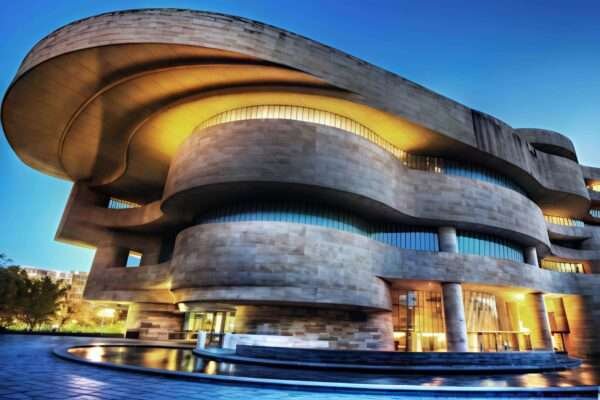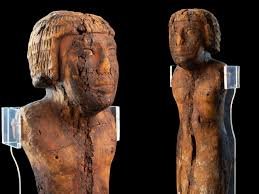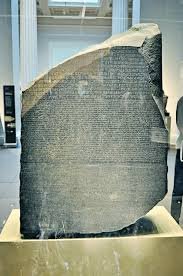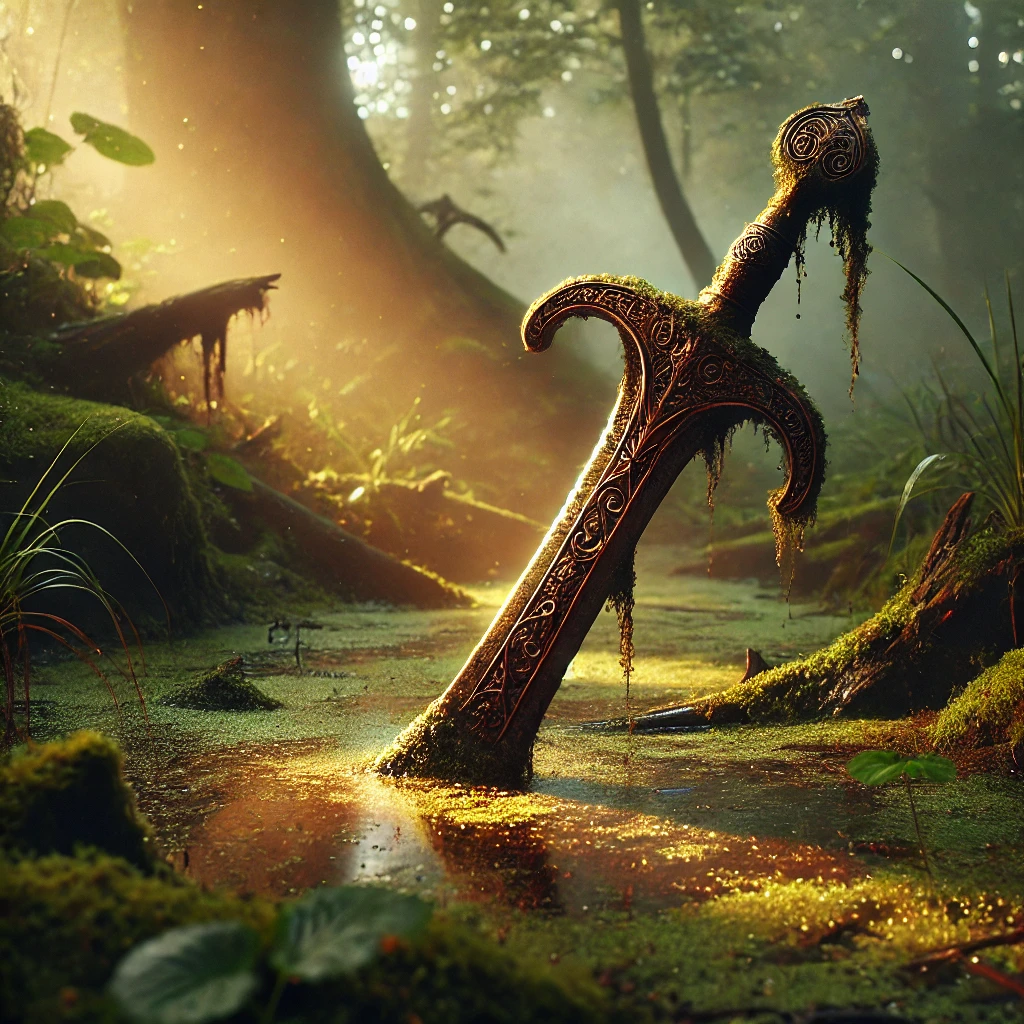The “National Museum of the American Indian” and “American Indian Museum” are not just museums, but they represent an ideology that brings to life the millions of years old cultural saga of the natives of America. This museum basically displays the culture, traditions, arts and struggles of communities that have often been ignored in history.
The main purpose of establishing these museums was to restore the identity of the Native American tribes and give them the right historical and social context. The existence of the National Museum of the American Indian not only attracts visitors but it is also an invaluable resource for researchers, historians and students.
This museum presents countless stories that did not find a place in books. The artifacts and exhibitions here make the American Indian Museum a temple of education. Every visitor who comes here returns with a new vision and understanding.
In this article, we will learn in detail how the National Museum of the American Indian and the American Indian Museum together provide depth to the American cultural landscape.
🏛️ History of the Museum and the Role of George Gustav Heye
National The foundation of the Museum of the American Indian was laid in 1916 when George Gustav Heye decided to make his private collection public. Due to his efforts and dedication, this museum came into existence in 1994 under the Smithsonian Institution.
George Gustav Heye collected more than 800,000 artifacts, clothing, tools and countless cultural resources in his life, which are an integral part of the American Indian Museum today. He collected the handicrafts and civilization of almost all the tribal communities of America, the natives of Canada, Mexico and South America.
The National Museum of the American Indian has not only become a center of collection, but also a memorial to historical figures like George Gustav Heye. His goal was that future generations should experience the Native American culture not only from books, but also directly. Today this museum is the embodiment of his dream.
Every object in its collection tells a story—sometimes of a celebration, sometimes of a journey, and sometimes of a struggle. The American Indian Museum has not only preserved history, but also kept it alive. 🧿 Major branches and architecture of the museum

The branches of the National Museum of the American Indian are located mainly in three places:
National Mall, Washington D.C.
Alexander Hamilton U.S. Custom House, New York City
Cultural Resources Center, Suitland, Maryland
The Washington D.C. branch is the most prominent, which was opened to the public in the year 2004. Its architectural design is inspired by Native American architectural styles, including rounded corners, natural stone, and the design of the rooms according to the direction of the sun.
The art collection of the American Indian Museum located inside the Alexander Hamilton Custom House in New York City plays an important role in connecting urban visitors to culture. Here giant statues, masks, traditional clothing and animal figures are displayed.
The Cultural Resources Center in Maryland is a branch dedicated to research and conservation. Here millions of artifacts are kept in an environmentally protected format.
The buildings of the National Museum of the American Indian are not just walls, Rather, they are dramatically composed, which strengthens the cultural message of the American Indian Museum. The designing of these buildings involves the direct participation of Native Communities so that their originality is maintained.
🎨 Major Collections and Exhibitions of the Museum

The collection of the National Museum of the American Indian is one of the largest native tribal collections in the world. More than 800,000 objects can be seen here, which cover about 12,000 years.
The exhibition sections include traditional blankets, ancient tools, costumes, arrows, tents, dance materials, masks and religious objects. Apart from this, the works of contemporary Native American artists are also specially displayed here.
Not all the exhibitions of the American Indian Museum are permanent; from time to time the collection is enriched with new exhibitions. Through these exhibitions, the diverse cultural identity of different tribes is highlighted.
Visitors can not only see here with their eyes but also interactive panels, digital exhibitions and virtual experiences You can feel the culture through the collection. The National Museum of the American Indian is the foremost museum to offer such interactive exhibitions.
This collection connects tribal tradition with each other and tells how different communities share the same lifestyle and belief system. This is why a visit to the American Indian Museum becomes a unique and informative experience for everyone.
📜 National Museum of the American Indian Act and Repatriation System

The National Museum of the American Indian Act, passed in 1990, was an important step in American history. This act gave the Smithsonian Institution the legal responsibility to repatriate objects of religious and cultural importance to tribal communities.
According to this act, the National Museum of the A The American Indian was to prepare an inventory of all human remains and objects that were collected under its supervision. After this, their legal and ethical return had to be done to the respective tribes.
This process of the American Indian Museum was not just the return of objects, but it was the return of justice and dignity. Tribes are still getting their sacred objects that were once taken away from them by force or deceit.
The Museum has created a dedicated department for Repatriation in which lawyers, anthropologists, and tribal representatives work together. This initiative has made the National Museum of the American Indian a model for other museums around the world.
This commitment of the American Indian Museum makes the visitors understand that this institution is not just a place of collection, but a pillar of “cultural justice”.
🎓 Educational programs and cultural contribution

The National Museum of the American Indian is not limited to just showing art or history. It is also a vibrant educational center. The programs here are especially designed for youth and researchers so that they can understand Native American history in depth.
The American Indian Museum offers traveling classes, kid-friendly interactions, workshops, and film screenings. Children are taught traditional songs and dances. Adults have interactive sessions, discussions on historical documents, and writing competitions.
The museum has a virtual learning center that allows students from remote areas to connect with the culture with the goal of “connecting Digital America to Indigenous America.”
In addition, the National Museum of the American Indian has also created study materials on Native culture in several languages. These books, booklets, and videos are mostly available for free.
The American Indian Museum is a blend of modernity and tradition. Every gallery, every picture, every word gives you a new vision of Original America.
🔚 Conclusion: Future Direction and Global Importance

The National Museum of the American Indian and the American Indian Museum are custodians of cultural heritage not only for the United States, but for the entire world. Through them, we learn that diversity is our strength, and that history doesn’t just belong to the victors—it should belong to every voice.
As the world moves toward global integration, the National Museum of the American Indian teaches how important it is to understand our roots.
The American Indian Museum is set to become even more digital and global in the years to come. There are still many tribes that are not adequately represented in the international world. This museum can play an important role in bringing them recognition.
Its founders, activists, artists, and supporters—all together are making sure that the world never forgets what it means to be “American”—and whose sacrifices built this country on its foundation.
That’s why this museum is a must-visit for everyone, so we can know who America’s real history is. Explore American Indian Museum & learn about Native heritage through the iconic National Museum of the American Indian.

